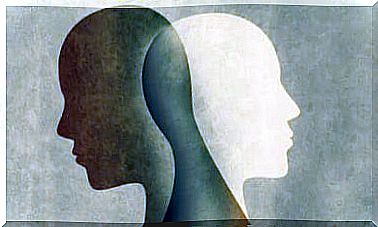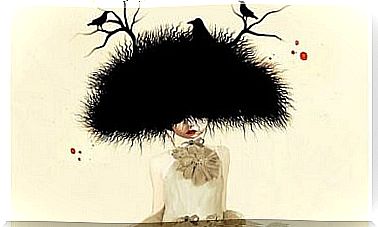Stop Imagining And Start Experiencing Reality: Gestalt Therapy

Performance opens the door to imagination, but it also distances us from reality and takes us out of the present. The creator of gestalt therapy, Fritz Perls, talks about how this therapy invites us to live in the present. We can do this by getting rid of our assumptions about the future.
Only with our feet on the ground will we be able to connect to the present. Other things, no matter what their consequences may be, are not happening right now.
Gestalt therapy falls within humanistic psychology, which sees man as a global being. One that has mind, emotions and body that together form a whole. This type of therapy helps people take responsibility for what is happening to them and encourages their personal growth. It is psychotherapy that goes beyond the clinic and into reality.
Influences of gestalt therapy
This style of psychotherapy was created in the 50’s by Fritz Perls, a psychiatrist and doctor. He combined his approach with that of his wife, psychologist Laura Perls. It included the principles of gestalt psychology, with concepts such as figure and background, to create a specific therapy.
Gestalt therapy places great emphasis on the perception of the individual as a whole. According to Perls, man tends to complete his existence, although the gestalt (in German, form or figure) can remain incomplete and repeat previous problems without letting new ones come to the surface.

Some of the influences included in Gestalt therapy were: psychoanalysis, with the study of defense mechanisms; Eastern religions such as Buddhism; existential philosophy; phenomenology; Theatre; and psychodrama, among many others. Authors such as Paul Goodman and Isadore From also contributed. They have focused on going beyond therapy and expanding it into different social and personal spheres.
What is gestalt therapy?
Gestalt therapy is an approach that focuses on the potential of each person. It sees the individual with their own resources and ability for self-regulation. It is a therapeutic approach that focuses more on progress than on content. The therapist will usually not ask “why?” And instead will ask “how?” The idea is to understand the process and not necessarily the causes of the behavior.
Gestalt theory places great emphasis on subjective physical feelings and emotions, and tries to help unlock the problems the client is working through. This approach shares a lot with mindfulness practice, as it asks people to accept what is happening instead of trying to fight it.
In addition, one of the basic concepts is realization or “consciousness”. That is, the consciousness of the present moment. It puts spontaneity before control. To live what one goes through instead of avoiding and resisting. For example, if you are feeling an emotion, gestalt therapy may encourage you to express it rather than hold it in place.
The basic concepts of gestalt therapy
The main purpose of gestalt therapy is to help people support themselves better and be more aware of the responsibility they have for their own mental well-being. Certain important concepts are used for this. They are:
Recognition
Awareness is a basic step. The individual needs to see how they think, feel and act under special conditions. When these three axes are not aligned, there is considerable discomfort. Circumstances can only change in the present if there is consciousness.

“Here and now”
In gestalt therapy, the present is understood as the only possible scenario, since it is lived as a “whole.” Therefore, if a therapist and client are working on something in the past, they approach it as if it happened in the present.
For example, if a person was bullied in the past, the therapist will ask them to explain the experience as if it were happening right now. By doing this, the therapist gives them the opportunity to remember past emotions and work with them here and now.
Responsibility
The therapist invites the client to take responsibility for their behavior, their thoughts and their feelings, even if they are negative. Taking responsibility gives more freedom and autonomy. In this way, they are better able to accept their mistakes and learn from them. An example that is used a lot is to get the person to speak in the first person and own their words.
What is the role of a gestalt therapist?
A gestalt psychotherapist walks the path with the person or client (they usually do not use the patient because they see the person as an active participant). They facilitate the growth process. In this approach, the therapeutic relationship is horizontal, which means that the therapist does not know more than the client.

The psychotherapist only facilitates. She does not give advice, but helps the person find the skills he needs to deal with himself and become stronger. Thus, the person is an “expert” on his own life, and there is no one else who can tell him what to do. So responsibility is given back to the client and personal autonomy is respected.
In short, the goal of gestalt therapy is to facilitate a process in which the client can take responsibility for their emotions and accept the cost of living in congruence with them. Honesty, openness and the present are fundamental values in gestalt therapy.
Bibliography:
Peñarrubia, F. (1998). Gestalt therapy: La vía del vacío fértil . Editorial Alliance.
Martorell, JL. (2008). Psychotherapies . Pyramid editions.
Latner, Joel (1994). Fundamentals of the Gestalt . Four Winds.









